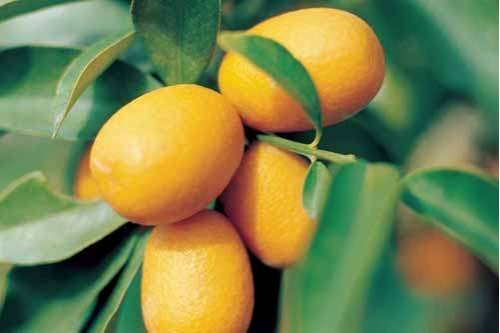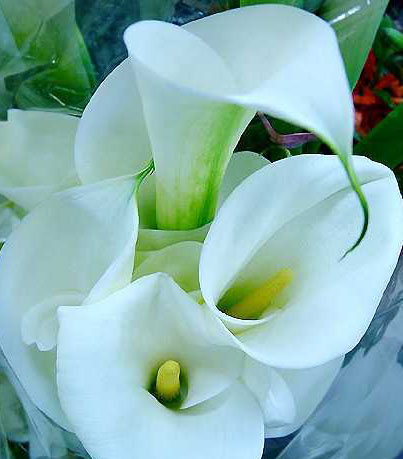Why do potted oranges only blossom and not bear fruit?
Potted tangerine only blossoms but does not bear fruit or fruit falls off early. in addition to the changes of environment, moisture, light and other conditions, the key is the lack of fertilizer, especially after fruit, the lack of phosphate fertilizer in the fruit preservation period. The fertilization of family potted tangerine can be as follows: after Qingming Festival, nitrogen and phosphorus fertilizer combined with fermented and mature organic fertilizer is used as base fertilizer, and nitrogen and phosphorus fertilizer is applied before flowering from May to June; topdressing based on phosphorus is applied 2 to 3 times, once every 10 to 15 days, the large fertilizer of the plant can be slightly thicker; after anthesis, the thin fertilizer combined with nitrogen and phosphorus is applied for 1 or 2 times, so that the fruit will not fall off after autumn.
In addition, it should be noted that when the initial fruit is formed, the basin soil should not be too wet or stagnant, otherwise the fruit will also fall; if there are too many fruits, fruit thinning should be carried out to reduce nutrition consumption and should not be greedy; when topdressing with the combination of nitrogen and phosphorus is applied after anthesis, the amount of fertilizer should be thin, not too thick, like water mixed with one part of fertilizer in September, if the concentration of topdressing is too high, the fruit can not be absorbed, and it will fall off ahead of time. In addition to bean cake crumbs or fishbone meal, the organic fertilizer applied must be fermented and ripened completely, not raw fertilizer that has not been fermented.

Kumquat
(1) kumquat. Kumquat is the most hardy variety in potted tangerine, so it is cultivated most widely. Kumquat crown is spherical, leaf blade is small, entire, lanceolate or rectangular round, reticulate veins are not obvious. The petiole has narrow wings on the left and right, which is called arrow leaf. The arrow leaves of kumquat are very narrow. The fruit is as big as the thumb, oval, orange when ripe, sweet and sour, and the flesh is edible. After the beginning of winter, the fruit still does not fall, which can be regarded as a good fruit for the Spring Festival. It has the characteristics of small plant, small leaf, small flower and small fruit, which is very suitable for the narrow environment of the balcony. It is not difficult to hang fruit, and there are more fruits, so there are many growers.
Tangerine
(2) tangerine. Tangerines are thriving, fruiting early, fruity, seedless, ornamental and potted on the balcony. Although tangerine is hardy, it is inferior to kumquat. Leaf blade large, long elliptic or prismatic, fleshy, petiole long, with small arrow leaves. The fruit is large, flat and round, with a diameter of 8 cm and sweet and juicy taste. Most of the citrus fruits were born on the new shoots of the year, while the honey orange fruits were born on the autumn shoots of last year, and the fruit setting rate was low. If the basin soil is too wet, Rain Water is too much, poor drainage, or is hit by storms and other reasons, the young fruit will also fall off. Balcony lack of light, only long leaves do not blossom, it is more difficult to hang fruit.
Potted citron
(3) citron. Citron is also known as fragrant round, with dense branches and leaves, and stems with sharp needles. Leaves alternate, elliptic, margin serrate. From May to June, the flower clusters are born in the leaf axils, white with purple meat, with strong fragrance. Fruit such as goose eggs, with milky protuberances at the apex, round and pointed at the base, rough yellow pericarp, glossy, fragrant, 10-11 months ripe fruit, although not edible, but not falling for a long time, can be extended to the next year when the new fruit is ripe and still remain on the branches, which can be watched for a longer time. A potted citron, which is about 5-6 years old with a pot crown diameter of 70mi 80cm, can hang dozens of fruits if it is well cultivated. When mature, green branches and green leaves, accompanied by orange fruit, is very lovable.
Generation limes
(4) generation. Generation is a variety of limes. The branches are slender and sparse, mostly triangular branches with green dry bark and sparse spines. The leaves are leathery, the ovate moment is round or oval, the margin is undulate, the petiole has an inverted heart-shaped broad arrow leaf, and the arrow leaf is as long as 1 beat 3 of the leaf, which is larger than other citrus arrow leaves, which is an important symbol to distinguish generations from other citrus species. The flowers are white with strong aroma. The fruit is mainly spring flowers, born on the new branches of the year. There are not many hanging fruits, 58 in each basin, the fruit is oblate, with a diameter of 7 Mel 8 cm, the surface is rough and fragrant. In that year, the autumn and winter changed from green to orange-red or orange-yellow, and if it was not picked, it changed from orange-red to green-green the following summer, and it continued to grow up. After 5 years, it could be hung on the same plant for several generations, so it was known as a generation or rejuvenation orange.
Bergamot
(5) bergamot. Bergamot is a variant of citron. Among the potted oranges, they are the least hardy. It has luxuriant branches and leaves, brownish green old branches, purplish red twigs and short hard thorns. Leaves alternate, leathery, elliptic, apex obtusely round, undulate serrated, petiole short, no arrow leaves. There are obvious nodes between petioles and leaves, but few nodes can be seen in citron. Can blossom many times a year, the flower is white, the petal base band purplish red, has the fragrance. The fruit is long, the skin is wrinkled and shiny, and those whose ends crack like fingers are called bergamot; those who are not completely cracked are called fist bergamot. The flesh is almost completely degraded, the fruit is bright yellow, with a strong fragrance, bronzed when ripe, as strong as wood, and can be preserved for a long time without decreasing the fragrance. There is a pot of bergamot at home, which is full of fragrance and interesting.
Four seasons tangerine
(6) four seasons tangerine. Four seasons tangerine is also a common potted orange on the balcony, especially in Guangdong. It is a hybrid of kumquat and orange. The fruit is oblate, about 3 cm in diameter, orange when ripe, sour and inedible. Four Seasons tangerine ripens to fall off naturally, as long as half a year, such as the autumn hanging fruit can be seen until May next year, while kumquat fruit ripe, can only continue to watch the fruit for one or two months. A four-season orange with a crown diameter of 50-60 cm can hang more than a hundred fruits. The four seasons tangerine is full of fruit and is adorable for a long viewing period.
- Prev

Is Zhu Dinghong toxic?
Recently, many netizens have sent e-mails asking if the editor Zhu Dinghong is poisonous: Zhu Dinghong is also called Hedinghong, which is toxic. I said Zhu Dinghong is basically free of poison. Yes, there are also people named Crane Ding Hong. In fact, its nicknames are Baizhilian, Huazhong Orchid, Guting Flower, called Baikulian, Zhu Dinglan, also known as Pillar Dinghong, etc.
- Next

What is the yellowing of calla lily leaves?
There are many reasons for calla lily leaves yellowing, such as improper watering, excessive fertilization or lack of fertilizer, high temperature and dry air. The solution is to apply the right medicine to the case, watering as soon as it is dry, watering thoroughly, and keeping the basin soil moist; fertilization should be dominated by phosphorus and potassium fertilizer during flowering and nitrogen fertilizer before flowering, with less frequent application.
Related
- Fuxing push coffee new agricultural production and marketing class: lack of small-scale processing plants
- Jujube rice field leisure farm deep ploughing Yilan for five years to create a space for organic food and play
- Nongyu Farm-A trial of organic papaya for brave women with advanced technology
- Four points for attention in the prevention and control of diseases and insect pests of edible fungi
- How to add nutrient solution to Edible Fungi
- Is there any good way to control edible fungus mites?
- Open Inoculation Technology of Edible Fungi
- Is there any clever way to use fertilizer for edible fungus in winter?
- What agents are used to kill the pathogens of edible fungi in the mushroom shed?
- Rapid drying of Edible Fungi

